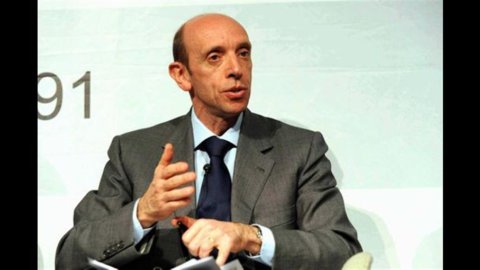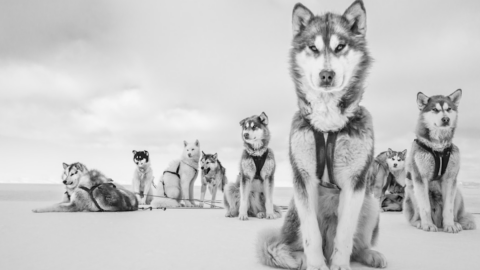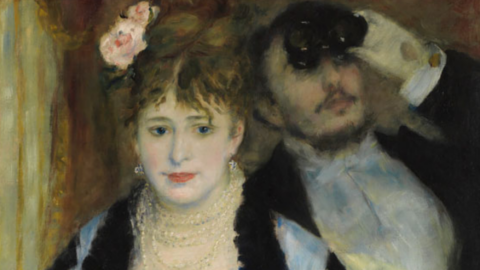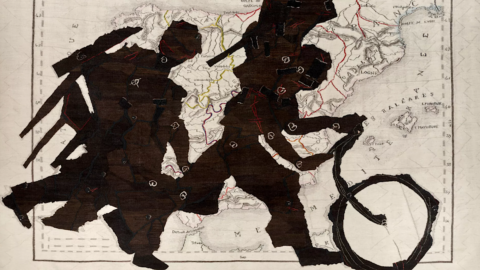Known for adopting the characteristics of a chubby kid and injecting his works with an unnaturally cartoonish air, Liu Ye created Untitled in 1997, three years after his return from Berlin to China, just as the artist began to progress on his own terms by holding his first solo exhibition at Ming Jing Di Gallery in Beijing.
After Liu's return to Beijing in 1994, he began to use the color red extensively in his works. Untitled comes from Liu's body of work which features an iconic motif: the red curtain. Painted in a soft shade of reds, the curtain further dominates the canvas and serves as a backdrop to the scene. The sense of volume is created through the precise and undulating use of light and shadow. Despite the many connotations that can be associated with the red hue of Untitled, it is crucial to note that Liu's time in Berlin took the artist out of China at a pivotal moment in its recent history, allowing his work to develop independently, away from a political point of view and watching events unfold from a western perspective. Red thus serves as a color that Liu returns as a reminder of his childhood, where he was once the only choice of color in a world of red leadership, yet through his painting, the shade of red attains freedom. It is no longer the political color it once was, but here it is treated abstractly in the form of a stage curtain, becoming the bearer of meanings from a large sphere of time and space. Setting the scene on a theater stage, this place stimulates one's imagination as Liu Ye conjures dreams and takes us away from reality. The theater was an environment with which Liu was most intimate during his early childhood: it served not only as the place where his father's children's plays were performed, but was also used for red propaganda in the form of plays revolutionaries or choral performances in a wider social context.
The artist's first thematic treatment on the stage of the theater begins in Beijing Madonna (1995), with members of the chorus as rounded cherubs with wings, performing in front of the red curtain with a distinct sense of order. Liu puts emphasis on the children, putting them front and center in the composition and in turn giving the red curtain a role similar to that of a prop. We see more meaning given to the red tent in his naval series, Untitled (1997-98). However, it is in the present work that we see Liu's first real attempt to address the red curtain motif as an integral part of his composition and to elevate it to assume the leading role in his own right. The depiction of a curtain is symbolic and can often be hinted at as an act of hiding, but in Untitled we see a possibility for artist self-discovery. By playing with the circular shape of the spotlight against the square composition, he creates spatial imagination, resembling Tondo art, or black and white silent films, in which a blackout would appear, leaving the main character in focus. The artist returns to this theme from the stage of Poet (1999). This period saw one of the artist's most notable series with the frequent use of the color red since his return to Beijing. The curtain motif resurfaces in his work after 2000, but sees an artistic shift where he moves away from red, and begins to use more bluish and greenish tones.
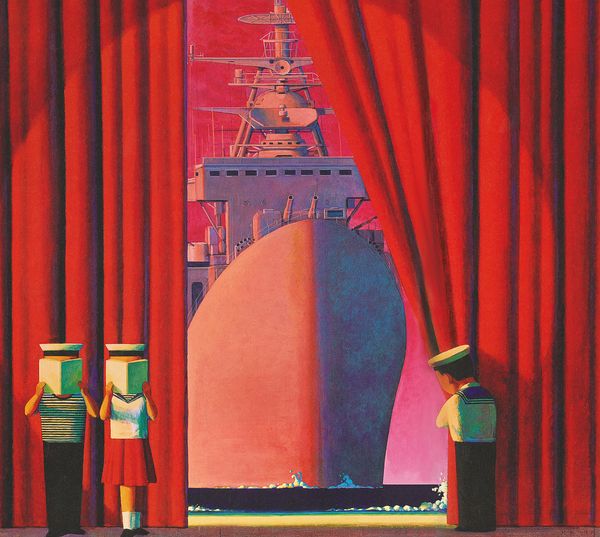
Untitled 1997-1999 is a much more playful version of the stage theme than the other works in the series, in which a spotlight highlights two cherubic little children, sunglasses on the spot, sticking their heads out of the tent and mischievously sticking their tongues out; revealing a fragment of an outdoor scenery with a taste of blue and pink skies.
Liu retains his image in Untitled in the form of a leftist little boy who bears a striking resemblance to the artist. Liu began incorporating the character of a boy in sunglasses in the early 90s, such as in Interior (1993), which represented his love of the comedy genre through his infatuation with actors such as Stephen Chow, Charlie Chaplain and Buster Keaton. Liu's characters were dressed in striped shirts, indicative of the attire that was very common for younger children in the mid-90s West, the golden age of Disney films. The artist has always had a fascination for the world of fairy tales, recalling his childhood, being born to a father who was a children's playwright, and discovering a large black chest of Western history books under his bed. Perhaps the only glimpse of the outside scenery we have is actually a window into an artist's self-discovery through a nostalgic looking back into his past.
Born in Beijing in 1964 and raised against the backdrop of the Cultural Revolution, Liu spent most of his childhood living a censored and controlled life in the countryside with his father, but found freedom in the form of his parents' hidden history books.
He has come to love Oscar Wilde's The Picture of Dorian Gray, which tells the story of an artist who has fallen in love with the youth and beauty of the subject of his full-length portrait; thus selling his soul to ensure that the portrait, rather than himself, ages and fades. The story sows the seeds for Liu's artistic style for years to come and is the very reason why Liu never fails to implant a sense of eternal childlike innocence in his characters, with round faces, ruddy cheeks, and short statures. . cherubic children. But beyond these childlike characteristics, Liu conveys an attitude of life. Returning to the imaginings and fantasies of his younger self through the little boy and girl in Untitled, Liu sheds the mask and outer garments of adulthood, restoring the state of a child dreamer immersed in his thoughts.
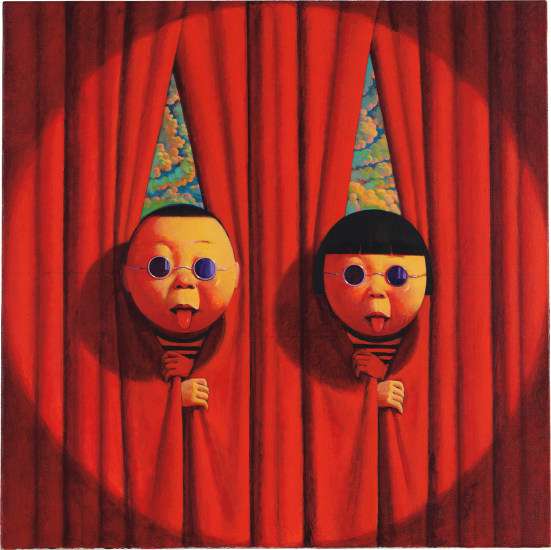
LIU YE
Untitled
1997
signed and dated 'Ye [in Pinyin and Chinese] 97' on the reverse
acrylic and oil on canvas
90x90cm. (35 3/8 x 35 3/8 in.)
Executed in 1997.
Pixy
€ 281,000 449,000-
-
Origin
Galerie Serieuze Zaken, Amsterdam
Private Collection, Netherlands
Canvas International Art, Amsterdam
Acquired from the above by the present owner -
Exhibitions
Austria, Kunstraum Innsbruck; Finland, Kuopio Art Museum; Finland, Salo Art Museum; Norway, Haugar Vestfold Kunstmuseum; Sweden, Ystad Konstmuseum; Netherlands, Singer Laren Museum; Germany, Kunsthalle Recklinghausen, Facing China: Works of Art from the Fu Ruide Collection, 17 May 2008 – 24 June 2012, pp. 58, 65 (illustrated, p. 58)
-
REFERENCES
Christoph Noe, ed., Liu Ye Catalog Raisonné 1991-2015, Germany, 2015, no.97-13, p. 275 (illustrated)
20th Century & Contemporary Art Evening Sale – Hong Kong Auction 25 November 2018

